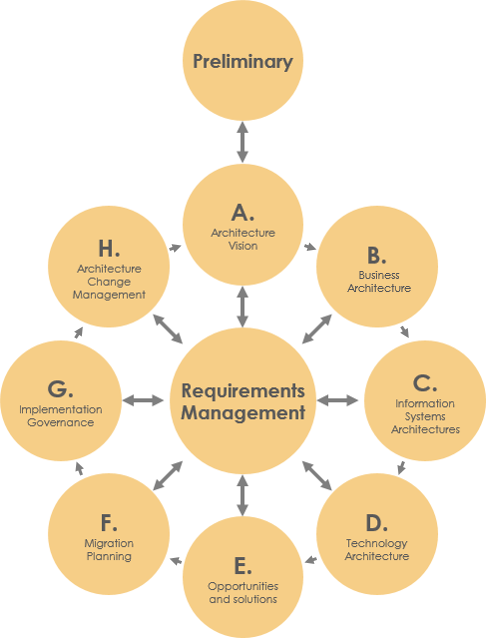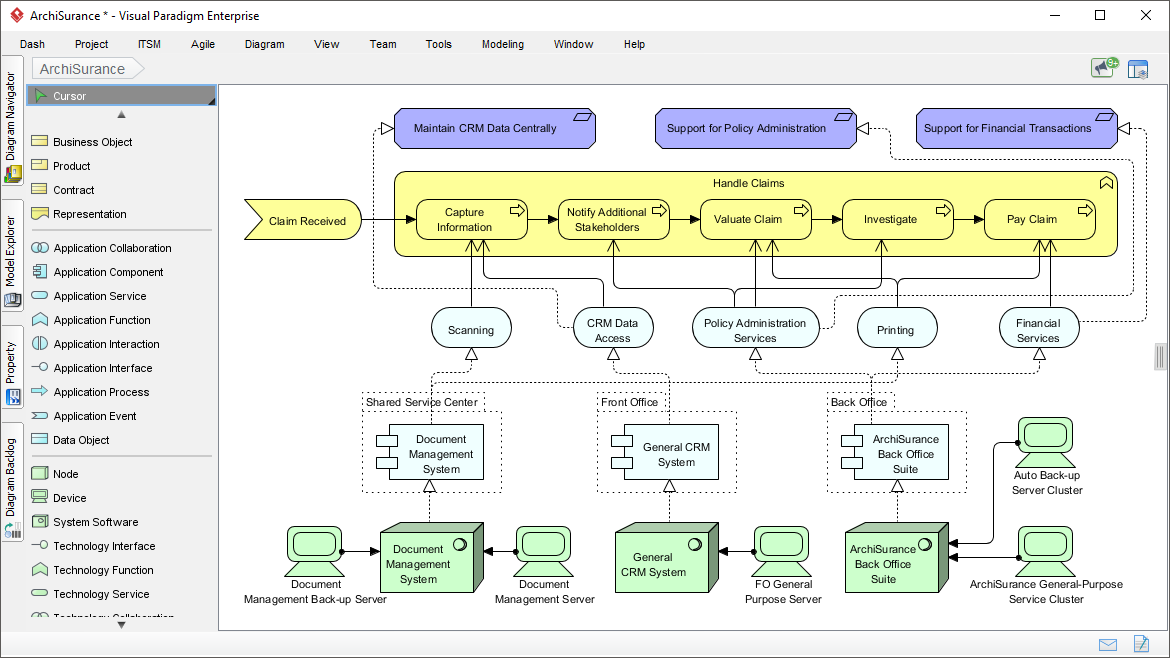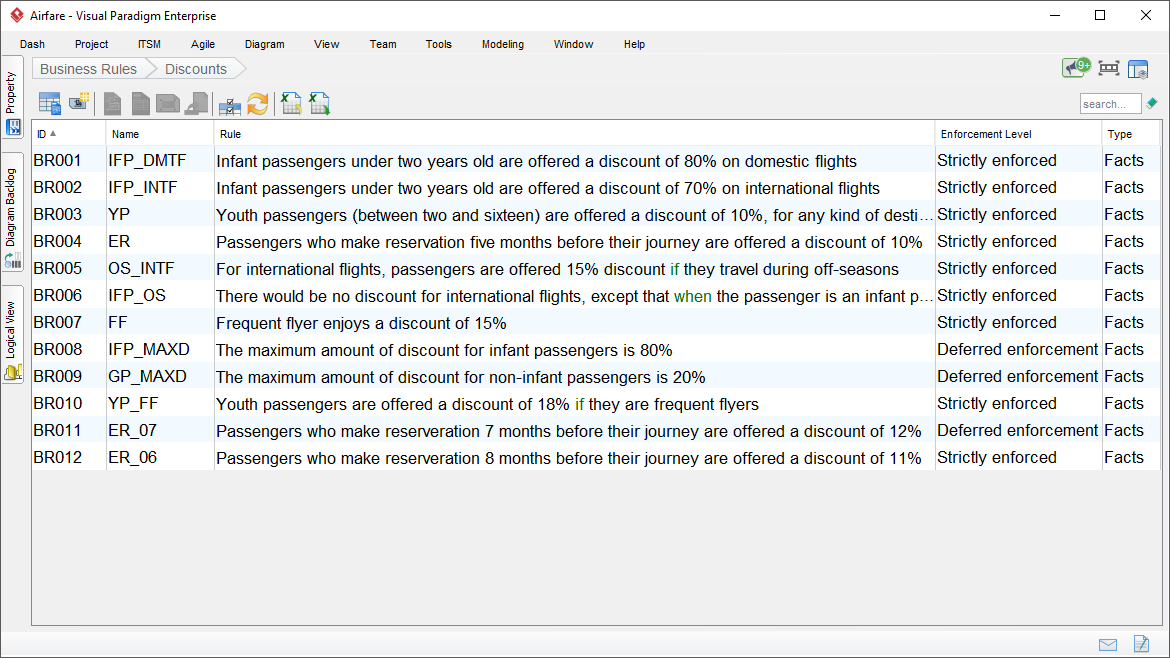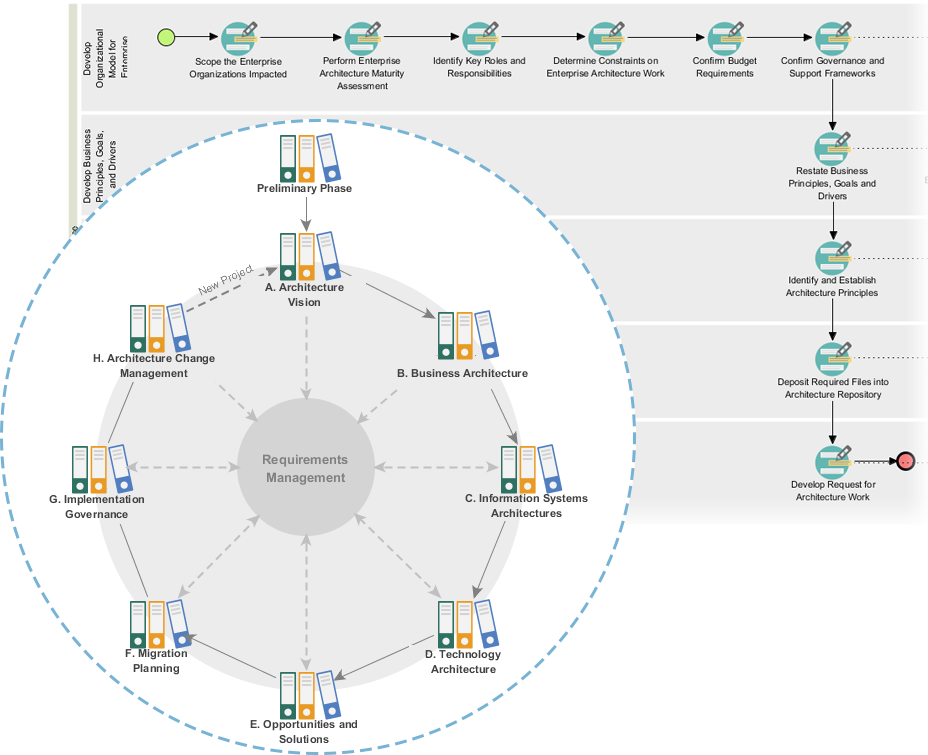Home » Archives for February 2023
Hexagonal architecture diagram, also known as ports and adapters architecture, is a software architecture pattern that aims to make software systems more maintainable, testable, and adaptable to changing requirements. It is a way of organizing the code of a software system in such a way that it remains independent of its external interfaces, such as databases, user interfaces, or third-party services. The hexagonal architecture diagram provides a clear separation between the business logic of the software and the external dependencies, making it easier to manage and maintain the software over time. The figure…
continue reading →
ArchiMate and
BPMN are both popular modeling standards for business modeling. ArchiMate is an
architecture modeling language that provides a visual representation of the structure and organization of an enterprise. On the other hand, BPMN is a business process modeling notation that provides a visual representation of
business processes and their flow.
While both ArchiMate and BPMN are useful for modeling businesses, they have distinct differences that make each one better suited for certain use cases. It is important to understand these differences in order to choose the best approach for your needs. In this article, we will compare ArchiMate and BPMN and help you understand the key differences between the two, helping you to make informed decisions about which approach is best for your specific use case.
(more…)
Welcome to our page about Fact Model, a powerful tool for businesses and organizations looking to solve complex problems. Here, we will explain what a fact model is, provide a detailed history, discuss why fact models are important, and show you how to create a fact model using Visual Paradigm. Understanding Fact Model What is Fact Model? A fact model is a diagrammatic representation of the business domain, which captures the relevant information about the business and the relationships between those pieces of information. The goal of a fact model is to provide…
continue reading →
TOGAF, or The Open Group Architecture Framework, is a widely used enterprise architecture framework that provides a comprehensive approach to designing, planning, implementing, and governing enterprise information systems. It provides a common language and methodology for enterprise architects to design and manage the architecture of an organization.
(more…)
Have you ever wondered how businesses manage to run like well-oiled machines, even when faced with constant changes and challenges? The answer lies in their business processes. Business processes are a series of tasks and activities that businesses follow to achieve their goals and objectives. They are the backbone of any organization and can make or break a company's success.
But how do businesses ensure their processes are efficient, effective, and adaptable? That's where business process analysis comes in.
(more…)
As an enterprise architect, you are likely familiar with ArchiMate and TOGAF, two of the most widely used modeling languages for enterprise architecture. While both ArchiMate and TOGAF have many similarities, they also have important differences. In this article, we'll explore these differences to help you choose the right modeling language for your needs.
(more…)
ArchiMate is a modeling language and framework used by enterprise architects to describe, analyze, and visualize the relationships between various aspects of an organization, including its business processes, data, applications, and infrastructure. In this article, we will explore the purpose of ArchiMate and how it can be used by enterprise architects to support their work.
(more…)
Business rules are the cornerstone of any successful organization, providing the foundation for decision making and operational processes. As a business analyst, it's essential to have a tool that can help you manage and implement these rules effectively. That's where Visual Paradigm comes in. In this article, we'll explore how you can use Visual Paradigm to manage business rules and streamline your organization's processes.
(more…)
Project Management is an art of balancing and organizing the various aspects of a project. The Project Management Body of Knowledge (PMBOK) is a standard framework developed by the Project Management Institute (PMI) that outlines the best practices for project management. PMBOK provides project managers with a clear understanding of what needs to be done, when it needs to be done, and how it needs to be done to ensure the success of a project.
(more…)
Enterprise architecture (EA) is a critical component of modern organizations as it helps businesses align their technology investments with their strategic goals and objectives. However, developing an effective EA is a complex process that requires a structured approach, and that is where The Open Group Architecture Framework (TOGAF) comes in.
TOGAF provides a comprehensive framework for EA development, and it has been adopted by many organizations worldwide. In this article, we will explore how TOGAF can help organizations to develop an effective EA.
(more…)











